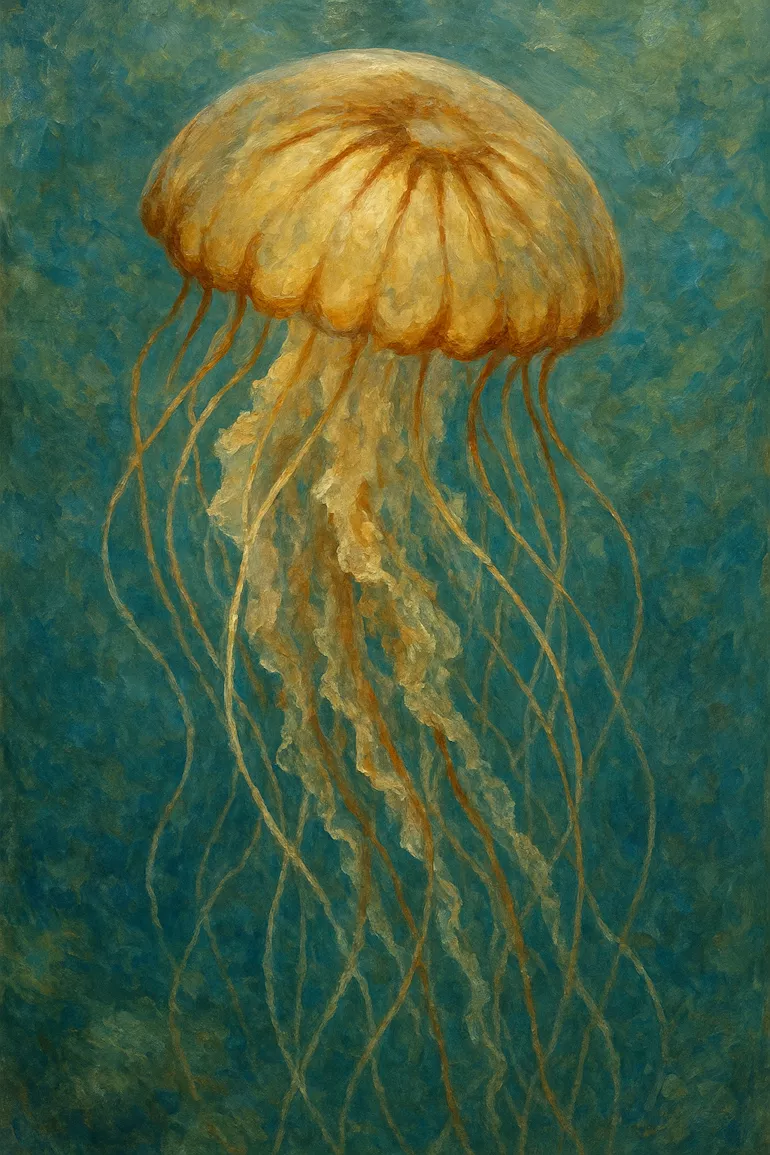Dangerous animals in Sardinia are far fewer than many travelers expect, but the island still has some species — from wild boars to jellyfish — that deserve caution and respect.
Sardinia is one of the Mediterranean’s most celebrated destinations, attracting millions of visitors every year with its pristine beaches, ancient nuraghe stone towers, vibrant traditions, and rugged interior landscapes. For many travelers, the Italian island feels like paradise: turquoise waters, fragrant pine forests, rolling vineyards, and sunlit villages. Yet as with any wild environment, questions arise about the presence of dangerous animals.
Is Sardinia really as safe as it looks, or are there hidden threats lurking in the forests and seas? This article explores the facts about Sardinia’s wildlife, separating myth from reality and providing practical advice for anyone who wants to enjoy the island responsibly.
Table of Contents
Dangerous Animals in Sardinia: How Risky Is the Island?
Compared to many parts of the world, Sardinia is remarkably safe in terms of wildlife threats. The island does not host large predators like bears or wolves, and it is free from venomous vipers that inhabit the Italian mainland.
However, there are animals that can cause harm in specific situations. The most notable are wild boar, some species of spiders, jellyfish, and common insects like mosquitoes and ticks. In addition, the surrounding Mediterranean waters host marine life such as sharks and sea urchins, which deserve awareness even if they rarely pose significant danger.
Understanding these risks allows visitors to enjoy Sardinia with confidence while respecting the natural world.
Wild Boar – The Most Dangerous Animal in Sardinia
Among the dangerous animals in Sardinia, wild boars (Sus scrofa) are the most commonly cited threat to both property and hikers. Boars are widespread across the island, inhabiting forests, scrublands, and even approaching suburban areas in search of food.
Why Wild Boars Are Dangerous
- Size and strength: Adult males can weigh well over 100 kilograms and have sharp tusks.
- Aggressive when threatened: Females with piglets and injured animals can charge humans or dogs.
- Property and traffic risks: Boars frequently cause agricultural damage and are involved in road accidents, especially at night.
Real Incidents
Reports of wild boars in residential areas have increased, with residents of Olbia and other towns describing intimidating encounters and attacks on pets. Hunting circles also report dogs injured or killed during encounters with aggressive boars.
Safety Tips
- Do not approach or feed wild boars.
- If you encounter one, back away slowly without turning your back.
- At night, use lights on trails and roadsides to spot animals earlier.
- Keep dogs on a leash in boar-prone areas.
Snakes in Sardinia: Myths vs. Facts
Italy is home to several venomous vipers, but Sardinia is free from them. This fact often surprises visitors who assume snakes are a universal risk across Italy.
The snakes you might see include harmless species such as the viperine snake (Natrix maura), which mimics the look of a viper but is non-venomous. Although it may flatten its head or hiss defensively, it poses no real threat to humans.
Key Point
If you see a snake in Sardinia, it is very likely harmless. Still, avoid handling or provoking reptiles, as even a non-venomous bite can cause infection if not cleaned properly.
Spiders: Rare but Notable Risks
While most spiders in Sardinia are harmless, the island is home to one species that occasionally makes headlines: the Mediterranean black widow (Latrodectus tredecimguttatus).
Facts About the Black Widow
- Recognized by its dark body with red spots, it prefers dry, rural areas and hides in crevices.
- Bites are rare, but when they occur, they can cause painful cramps and require medical attention.
- Deaths are almost unheard of today thanks to modern treatment and antivenom availability.
Advice
Wear gloves when working in woodpiles or abandoned buildings. Seek medical help if bitten by any spider you cannot identify.
Scorpions and Centipedes – Lesser-Known Dangerous Animals in Sardinia
Scorpions
While not the stuff of horror films, Sardinia’s scorpions deserve a mention. The most widespread is the Italian scorpion (Euscorpius italicus), a small, dark-brown species native to the Mediterranean.
What Makes Them Dangerous
Their sting is painful, comparable to a wasp or bee sting. For most people, symptoms are mild: localized pain, redness, or swelling. The main risk is for allergic individuals, young children, or people with compromised health, where stronger reactions can occur.
Incidents and Encounters
Scorpions are nocturnal and reclusive, usually hiding under stones, woodpiles, or in cool corners of rural buildings. Actual stings are rare, and Sardinian hospitals almost never report serious cases. Most encounters end with nothing more than surprise and discomfort.
Safety Tips
- Shake out shoes, clothes, or bedding if camping or staying in rural houses.
- Use gloves when moving stones or firewood.
- If stung, clean the wound, apply a cold compress, and seek medical attention if symptoms worsen.
Scolopendras
Perhaps more feared than scorpions in Sardinia is the Mediterranean banded centipede (Scolopendra cingulata), known locally as the scalapendra.
What Makes Them Dangerous
Size and appearance: Adults can grow up to 15–17 cm, with segmented bodies and menacing pincers.
Venomous bite: When provoked, a scalapendra can bite, injecting venom that causes intense pain, swelling, and sometimes fever or nausea. While not deadly, the pain is often described as severe and long-lasting, far worse than a bee sting.
Incidents and Encounters
Scalapendras are nocturnal hunters, feeding on insects and hiding under rocks, logs, or in damp basements. In rural Sardinia, stories of scalapendras crawling into houses contribute to their sinister reputation. Actual bites are uncommon, but they occasionally make headlines in local media because of the shock they provoke.
Safety Tips
- Avoid lifting stones or debris with bare hands in rural areas.
- Keep basements and storage areas dry and well-sealed.
- If bitten, wash the area thoroughly, apply cold packs, and seek medical care if symptoms are intense or persistent.

Jellyfish and Sharks: Dangerous Animals in Sardinia’s Seas
Jellyfish
Swimming in Sardinia is one of the island’s greatest pleasures, but during summer, jellyfish can appear near beaches.
Species to Watch
Most jellyfish species in Sardinia cause only mild stings. However, some like the compass jellyfish (Chrysaora hysoscella) can deliver more painful stings. Local environmental authorities monitor jellyfish presence, and typically only one species is considered moderately dangerous at any given time.
What to Do if Stung
- Rinse with seawater (not fresh water).
- Apply vinegar or special anti-jellyfish creams if available.
- Avoid rubbing the area, as this can spread the venom.
Sharks in the Mediterranean Around Sardinia
The Mediterranean Sea hosts more than 40 species of sharks, from small dogfish to impressive predators like the blue shark. Sardinia’s northeastern waters are even recognized as an Important Shark and Ray Area due to seasonal migrations.
Are Sharks Dangerous in Sardinia?
Sightings: Occasionally, bathers see sharks near the coast, such as a two-meter specimen spotted in Villasimius in 2023.
Attacks: There are no recent recorded shark attacks on swimmers in Sardinia. Most sharks avoid humans, and encounters are fleeting.
Advice
Remain calm if you see a shark; most are harmless and uninterested in people. Avoid swimming near fishing activity or at dawn/dusk when visibility is low.
Insects and Small Hazards
While less dramatic than sharks or boars, insects and small creatures are the most common sources of discomfort for visitors.
Mosquitoes
Very active in summer evenings, mosquitoes are mostly a nuisance. Malaria, once endemic, was eradicated decades ago, so bites today cause only itching or mild allergic reactions.
Ticks
Ticks live in tall grass and rural landscapes. They can carry bacterial infections, so travelers should check themselves after hikes and remove ticks promptly.
Other Creatures
Wasps and bees can trigger allergic reactions. Sea urchins, common in rocky bays, can cause painful punctures if stepped on. Wearing water shoes is highly recommended.
Myths and Folklore About Dangerous Animals in Sardinia
Sardinia’s people have always lived in close contact with nature, and over centuries they developed powerful legends about animals that symbolized fear, illness, or bad luck. One of the most enduring myths is that of the argia.
The argia was described differently across villages — sometimes as a spider, other times as a scorpion or a wasp. Folklore claimed that when a man was bitten by an argia, he would fall into a strange sickness that only music and ritual could cure. To heal him, villagers would gather and perform a dramatic dance accompanied by tambourines, violins, and chants. This tradition, known as the ballo dell’argia, was both exorcism and celebration, reinforcing community bonds.
Such stories reflect how Sardinians explained the natural world before modern medicine. Even today, the myth of the argia remains part of cultural festivals and oral history, a reminder of how fear of small animals shaped local identity.
Safety Tips for Exploring Sardinia
To minimize risk and maximize enjoyment:
Inland and hiking: Wear sturdy shoes, long trousers, and carry a flashlight at night.
Swimming: Respect lifeguard warnings, avoid jellyfish swarms, and wear footwear in rocky coves.
Camping: Keep food sealed to avoid attracting animals.
Allergy preparedness: Carry antihistamines or epinephrine if prescribed.
First aid awareness: Know the location of the nearest pharmacy or hospital.
Sardinia Is Safe but Worth Respecting
The reality is that Sardinia is a safe island with relatively few animal dangers compared to many destinations. Wild boars can be dangerous if provoked, jellyfish stings can disrupt a swim, and rare encounters with spiders or sharks deserve awareness. But with common sense and basic precautions, the risks are very low.
For most travelers, the only “danger” is falling so deeply in love with Sardinia’s landscapes and culture that it’s hard to leave. Respect the wildlife, stay informed about local conditions, and your trip will be as safe as it is unforgettable.

